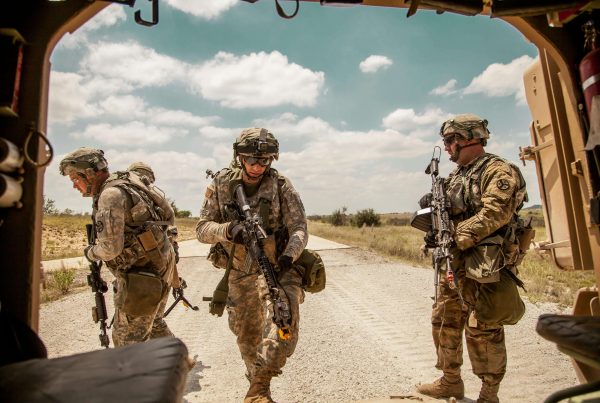Back pain and musculoskeletal injuries are the most frequently claimed disabilities among veterans. From military training and heavy equipment carrying to vehicle accidents and direct combat injuries, the physical demands of military service take a significant toll on a veteran’s spine, joints, and muscles. Many veterans struggle with chronic back pain for years after leaving active duty. This article explains how veterans can successfully claim disability benefits for back pain and musculoskeletal conditions, what ratings to expect, and strategies for building a strong veteran disability claim for these common injuries.
Why Veterans Experience Back Pain and Musculoskeletal Problems
The physical demands of military service create numerous opportunities for back and joint injuries. During basic training, recruits perform strenuous physical conditioning exercises that stress the spine and joints. Throughout a veteran’s military career, heavy equipment carrying, ruck marches with 60+ pound loads, vehicle operations, and the repetitive motions of military duties place continuous strain on the musculoskeletal system.
For veterans who served in combat roles, additional trauma from explosions, vehicle rollover accidents, or direct blunt force can cause acute back injuries. Many veterans experience multiple injuries during their service—one incident may injure a veteran’s back, and years of service-related physical strain compound the damage.
The result is that veterans often develop chronic back pain, arthritis in the spine, herniated discs, or other degenerative conditions. Many veterans continue experiencing these problems long after discharge, affecting their ability to work and maintain quality of life.
Service Connection for Back Pain
To receive VA disability benefits for back pain, a veteran must establish that the condition is service-connected. For back injuries, this typically means:
A veteran experienced an event during military service that caused or could reasonably have caused back injury, the veteran has current medical diagnosis of a back condition, and medical records support that the back condition likely resulted from the service-related event or the physical demands of military service.
Many veterans file successful claims by documenting specific incidents during service—a fall, vehicle accident, blast injury, or heavy lifting incident that caused immediate back pain. If military medical records from that time document the veteran’s back injury, establishing service connection becomes much easier.
However, not all back injuries for veterans are documented during service. A veteran may have ignored back pain during active duty due to the demands of military service, only seeking treatment after discharge. Even without contemporaneous military medical records, a veteran can establish service connection through:
Medical records from VA or private providers showing the veteran currently has a back condition consistent with service-related trauma, the veteran’s detailed account of the incident that caused the back injury, statements from fellow veterans or service members confirming the incident or the veteran’s back problems, and expert medical opinion linking the veteran’s current back condition to the service-related event.
VA Rating Criteria for Back Pain
The VA rates back conditions based on specific clinical findings and functional limitations. Understanding these rating criteria helps a veteran present evidence most effectively.
The VA examines a veteran’s range of motion in the spine, particularly flexion and extension. A veteran with severely limited range of motion due to back pain receives a higher rating than a veteran with normal range of motion. During a veteran’s Compensation and Pension exam, the examiner will measure the veteran’s ability to bend, twist, and move the spine.
The VA also considers a veteran’s pain levels and how pain affects the veteran’s ability to function. Medical records documenting a veteran’s pain, any imaging findings (like herniated discs or arthritis shown on MRI or X-ray), and clinical observations during exams all factor into a veteran’s rating.
Additionally, the VA considers how a veteran’s back condition affects occupational and social functioning. A veteran who cannot sit for extended periods, stand for long periods, or perform physical labor receives higher ratings than a veteran whose back pain causes only minor functional limitations.
VA Disability Ratings for Back Conditions
Back conditions in veterans typically receive ratings between 0% and 100%, depending on severity and functional impact.
A 0% rating for a veteran means the VA recognizes a back condition is service-connected but it currently causes minimal functional impairment. Veterans receiving 0% ratings still qualify for VA healthcare but don’t receive monthly disability compensation.
A 10% rating for a veteran indicates mild functional impairment, with the veteran experiencing some limitation in physical activities. Many veterans with this rating experience occasional back pain that doesn’t significantly limit work.
A 20% rating for a veteran reflects mild to moderate limitations in spinal function. Veterans at this rating often experience back pain with certain activities but can maintain employment with some limitations.
A 30% rating for a veteran indicates moderate functional impairment. Veterans at this rating often have documented range of motion limitations and regular pain affecting their activities.
A 40% to 50% rating for a veteran reflects significant functional impairment with substantial limitations in sitting, standing, bending, or lifting. Many veterans at this rating have difficulty with jobs requiring physical labor.
A 60% or higher rating for a veteran indicates severe functional impairment that significantly limits the veteran’s employment capacity. Veterans at these ratings often cannot perform their previous occupations due to back limitations.
Evidence That Strengthens a Veteran’s Back Pain Claim
To build a strong veteran disability claim for back pain, gather comprehensive evidence:
Military medical records: If the veteran sought medical treatment during service for back injury or back pain, military medical records are invaluable evidence. These records establish when the veteran’s back problem began and document the veteran’s service-related incident.
VA medical records: Regular treatment at the VA for back pain, imaging studies showing back abnormalities, and documentation of the veteran’s functional limitations all support the veteran’s claim. Veterans should maintain consistent VA healthcare to document their back condition.
Private medical records: If the veteran received private healthcare for back pain, those records also support the veteran’s claim. A veteran’s private physician may document the veteran’s back condition and functional limitations.
Imaging studies: MRI, CT scans, or X-rays showing herniated discs, arthritis, or other back abnormalities provide objective evidence supporting a veteran’s claim for back disability.
The veteran’s personal statement: A detailed account from the veteran describing the incident that caused the back injury, the veteran’s current symptoms, and how the veteran’s back condition affects work and daily functioning can be powerful evidence. Veterans should be specific about functional limitations—a veteran should describe that the veteran cannot sit for more than 30 minutes without severe pain, or that the veteran cannot lift more than 10 pounds.
Statements from healthcare providers: A letter from the veteran’s VA doctor or private physician stating that the veteran’s back condition is consistent with service-related injury or military service demands strengthens the veteran’s case.
Buddy statements: Letters from fellow veterans or service members confirming that they witnessed the veteran’s back injury or the incident causing it can corroborate the veteran’s account.
Secondary Back Conditions
Veterans should also consider filing claims for conditions secondary to their back disability. A veteran with a service-connected back injury may develop:
Depression or anxiety from chronic pain and functional limitations, sleep disorders from pain disturbing the veteran’s sleep, or other conditions caused or aggravated by the veteran’s back injury.
These secondary conditions can receive separate ratings. A veteran might receive a 40% rating for back pain and an additional 20% rating for depression caused by chronic pain. The VA combines these ratings (though not by simple addition) to determine total disability compensation.
The Compensation and Pension Exam for Back Conditions
When a veteran files a claim for back disability, the VA typically schedules a Compensation and Pension (C&P) exam. A veteran should prepare thoroughly for this exam.
During the veteran’s C&P exam, the examiner will:
Ask the veteran detailed questions about the veteran’s back pain—when it started, what makes it better or worse, how severe it is, and how the veteran’s back condition affects daily activities. Physically examine the veteran’s spine, testing range of motion and pain response. Review the veteran’s medical records. Possibly order imaging studies if the veteran hasn’t had recent imaging.
A veteran should wear comfortable clothing to the veteran’s exam and be prepared to move and demonstrate functional limitations. A veteran should be honest about the veteran’s pain and functional limitations—exaggerating or minimizing symptoms can result in lower ratings or claim denial.
Common Mistakes Veterans Make
Veterans filing back disability claims often make mistakes that weaken their veteran claims:
Many veterans fail to maintain consistent medical records. A veteran who receives treatment sporadically or disappears from VA healthcare for years makes it harder to prove the veteran’s back condition is continuous and service-connected. Veterans should establish regular VA care even if the veteran believes the veteran’s condition is stable.
Some veterans minimize their symptoms during medical exams, either due to pride or concern about appearing disabled. A veteran should be honest about functional limitations. If the veteran cannot sit comfortably for extended periods, the veteran should say so during the veteran’s examination.
Veterans sometimes fail to obtain imaging studies. While the VA will order imaging if necessary, veterans can strengthen their veteran claims by obtaining MRI or CT scans showing the veteran’s back abnormalities. These objective findings support a veteran’s rating request.
Finally, many veterans don’t provide detailed personal statements. A veteran who simply files a form without explaining how the veteran’s back condition affects the veteran’s life misses an opportunity to connect with the VA reviewer evaluating the veteran’s case.
Conclusion
Back pain and musculoskeletal injuries are legitimate service-connected disabilities affecting millions of veterans. If a veteran served in the military and now experiences back pain or other musculoskeletal problems, a veteran likely has grounds for a disability claim. Gather comprehensive evidence, maintain consistent medical treatment, and consider working with a veteran representative to strengthen a veteran’s claim. Your service placed demands on your body—you deserve recognition and compensation for the physical toll of that service.



